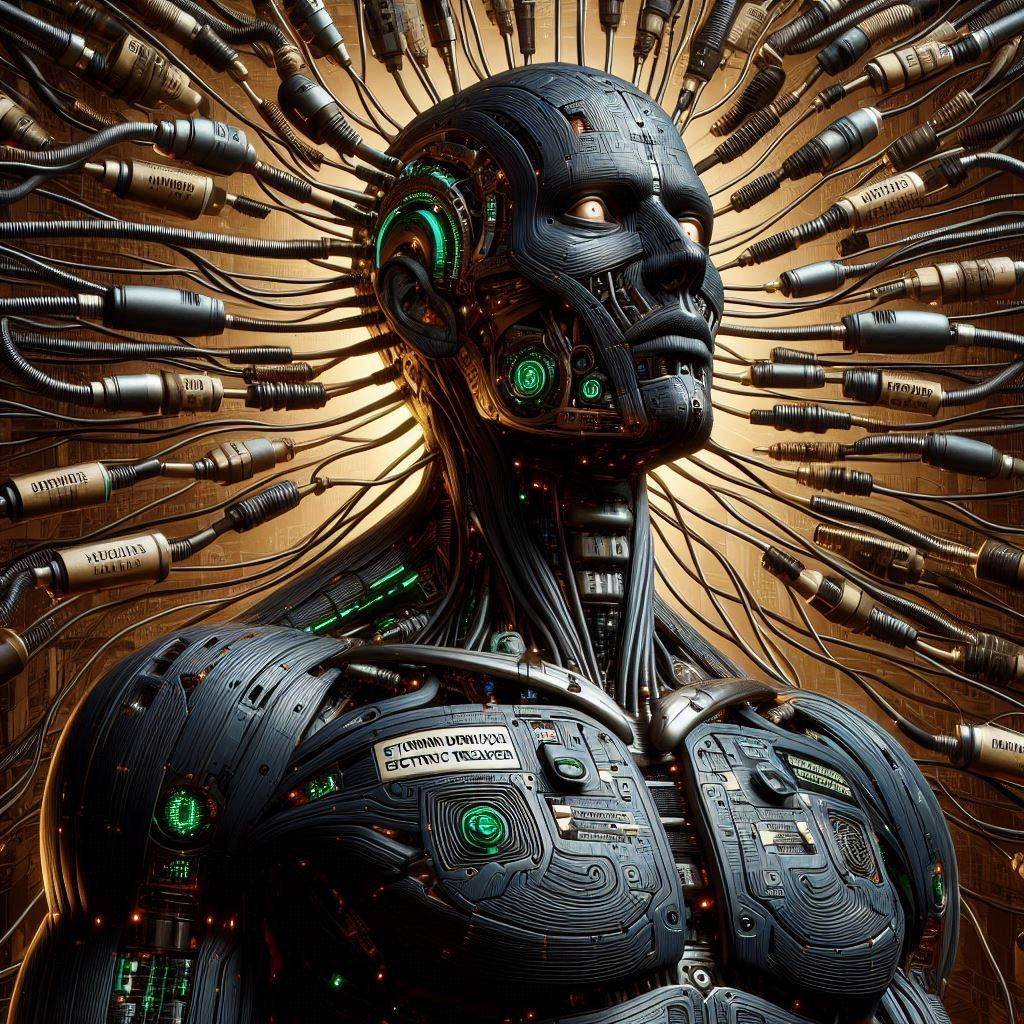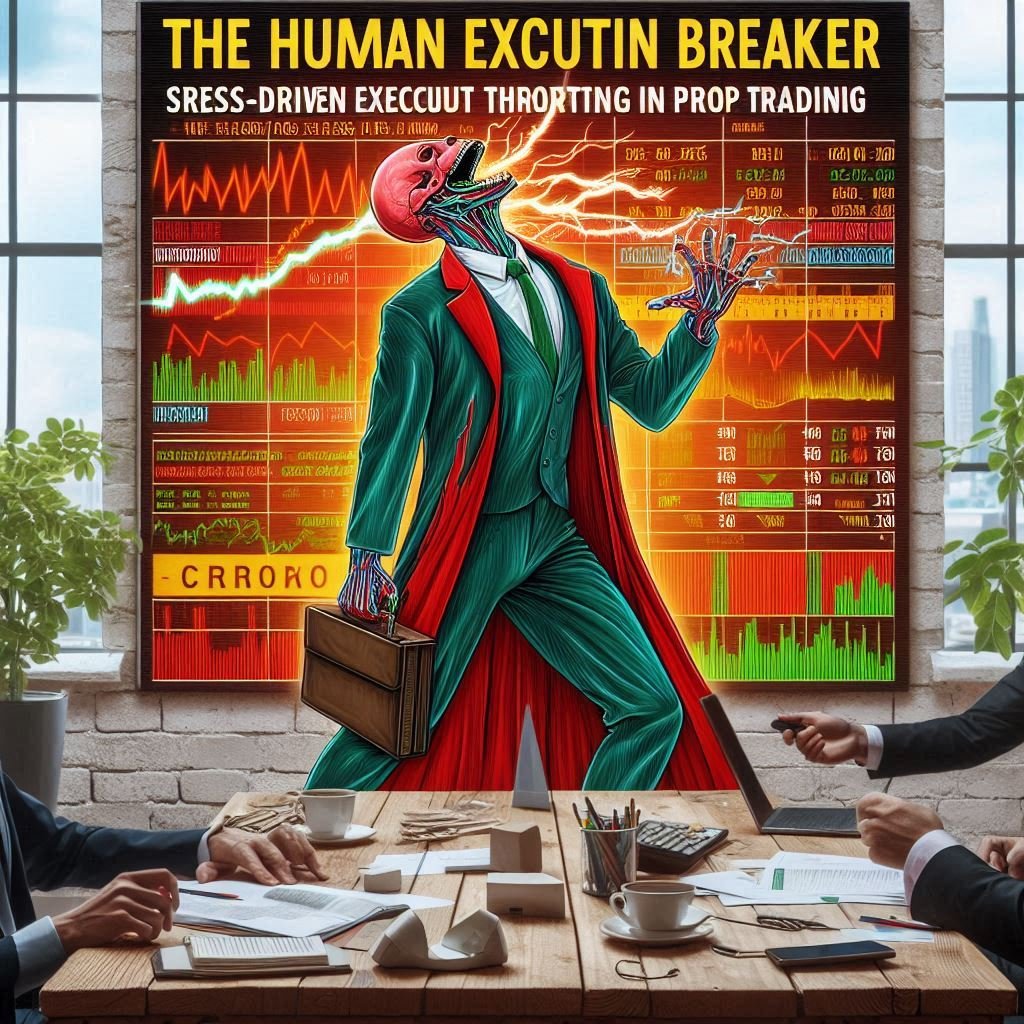Imagine a fighter jet tearing through the sky at supersonic speed. Beneath its sleek frame lies a cockpit housing a single pilot — the decision-maker, the brain of the machine. No matter how advanced the avionics or how powerful the engine, if the pilot blacks out under G-force, the flight ends in disaster. Prop trading is no different. The desk may be armed with high-speed models, real-time feeds, and ultra-low-latency execution, but at the center of it all sits the human — a trader whose mind is the cockpit. And just like that jet, when stress spikes, systems must know when to ease off the throttle.

This is where Stress-Driven Execution Throttling enters — not as a restraint, but as a form of intelligent self-preservation. It is the invisible co-pilot that watches the human pulse and prevents brilliance from burning out into chaos.
1. The Fire in the Circuit: Understanding Cognitive Overload
Imagine a trader’s brain as a high-performance processor. Under normal load, it runs cool, nimble, and precise — interpreting signals, executing strategies, recalibrating risk. But introduce prolonged drawdowns, sudden volatility, or back-to-back system pings, and that processor begins to overheat. Errors multiply. Reaction times lag. Emotional bias seeps in. In prop trading, where milliseconds and micro-decisions matter, stress becomes a stealthy saboteur.
Stress-Driven Execution Throttling treats this not as a weakness, but as a measurable input — as vital as slippage or latency. It integrates biometric data (heart rate variability, blink rate, galvanic skin response), behavioral markers (hesitation before execution, abnormal keystroke patterns), and even NLP scans of communication tone to detect signs of overload.
2. The Auto-Pilot: How Throttling Works
Now picture that same fighter jet suddenly encountering turbulence. Instead of relying solely on the pilot, the system begins adjusting flaps, reducing thrust, and rerouting. In prop trading, throttling kicks in when cognitive turbulence reaches redline.
This doesn’t mean slamming the brakes on trading altogether. Throttling is adaptive. It might slow down order frequency, cap notional exposure per minute, or even shift strategy execution from discretionary to automated models temporarily. In extreme cases, it triggers a “cool-down protocol” — a short-term suspension of trading privileges, gently but firmly guiding the trader away from the screen, much like a pit crew pulling a race car into the garage before the engine seizes.

3. Throttling as Edge, Not Limitation
To the untrained eye, this might seem like pulling punches in the middle of the fight. But seasoned prop trading firms know better. Throttling is not about avoiding risk — it’s about preserving decision quality when it matters most.
In fact, data shows that most catastrophic losses don’t occur during volatility itself, but from poor human responses to it. The trader who revenge-trades after a loss, the one who over-leverages after a dry spell, or the one who freezes in high-frequency conditions — these are moments when the edge bleeds away. Stress-Driven Execution Throttling acts as a neural buffer, ensuring that performance curves remain smooth even when the emotional graph spikes erratically.
4. Culture Shift: From Machismo to Mindfulness
Prop trading has long celebrated grit — the lone trader pulling all-nighters, wrestling the market into submission. But modern desks are rewriting that mythology. Today’s elite firms value mental clarity as much as quant skill. Trader dashboards now display wellness metrics alongside P&L. Break rooms have meditation pods. Performance reviews include behavioral resilience.
Stress-Driven Execution Throttling supports this culture shift. It tells the trader: “Your brain is your greatest asset — and we’re protecting it.” Over time, this not only reduces burnout but elevates the quality of strategies and the consistency of returns.
5. Future Horizons: AI as Emotional Risk Manager
Looking ahead, the most forward-thinking prop trading firms are embedding AI-driven emotional analytics directly into execution stacks. Imagine an algorithm that not only reacts to market signals but cross-references those signals with trader cognitive states before executing. “You’re 10% more likely to overtrade right now,” it might flash. Or it might gently throttle exposure while the trader regains composure. The AI doesn’t replace the trader — it safeguards the edge.
The Smart Pause That Wins the Race
In the breakneck world of prop trading, where every tick carries consequence, the ultimate advantage may not lie in speed alone — but in the wisdom to slow down at the right moment. Stress-Driven Execution Throttling is not a leash; it’s a lifejacket, a feedback loop between performance and humanity.
It turns the fragile human trader into a resilient decision engine — one that not only survives the storm but steers straight through it.




